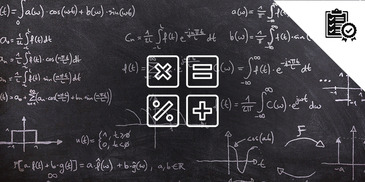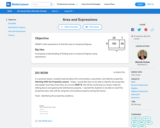
This unit is all about linear relationships and functions.
- Subject:
- Mathematics
- Material Type:
- Lesson Plan
- Provider:
- BetterLesson
- Date Added:
- 12/01/2022


This unit is all about linear relationships and functions.

Students will be learning through exploration on how to analyze and create circle graphs and Venn diagrams.

The numbers in an addition number sentence (addends) can be added in any order and the sum remains the same.

Using base-ten materials and place-value skills, students gain a better understanding of how to add and subtract numbers.

Students combine like terms and simplify expressions with multiple terms and variables.

Students look at making wise consumer decisions by figuring out what is the better deal.

Students develop spatial reasoning about large areas through composing and decomposing rectangles to determine area.

Fractions can be used to understand halves of a unit square.

Area word problems using a real world context pose new mathematical challenges for students to negotiate.

Students write expressions to find the area of compound figures.

Lesson plan in which students calculate area, build areas to a given amount, and calculate the perimeter with the use of Legos. Step by step instructions and videos are provided. CCSS.Math.Content.3.MD.C.7.c Use area models to represent the distributive property in mathematical reasoning.

Students need time to connect area and perimeter. This two day exploration sets the stage for our short unit.

Students build models wherein the area remains the same, while changing perimeters.

Students use their understanding of area to have a meaningful debate about a building plan.

Dividing an irregular shape into rectangles helps students find the area of an irregular shape.

Students take their knowledge about area of rectangles, squares and triangles and apply it to parallelograms, trapezoids, and composite shapes.

Students look for break apart irregular polygons to make arrays to find the area of these common shapes.

Students apply what they know about area of other polygons to develop a formula for finding the area of a triangle.

Creating rooms with different dimensions but the same area improves understanding of multiplicative principles.

Students develop a meaning of multiplication through the use of arrays.